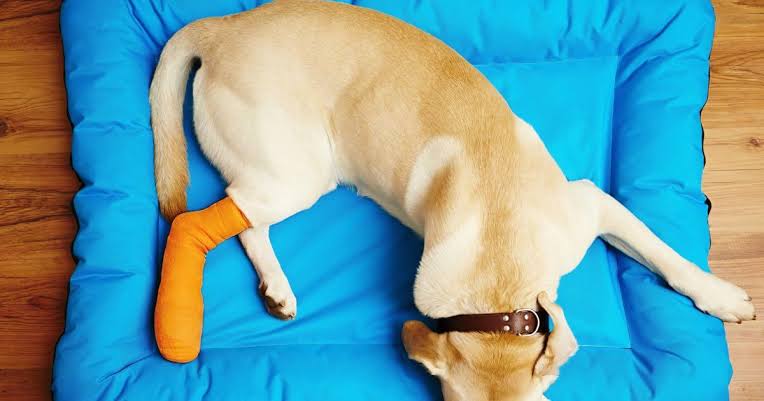It takes no time at all for things to go sideways. One flip off the couch, one miss in a walk, and suddenly your dog is yelping, limping, or unwilling to move. If you’re like most dog owners, your first instinct is panic: Is it a serious injury? Do we need the vet?
Bone injuries in dogs aren’t uncommon, and you’ll probably not want to ignore them. Whether it’s a hairline fracture or a complete fracture, getting prompt attention and the proper care makes all the difference. Here’s what to expect, look for, and how to best assist your dog through dog fracture treatment – and not go crazy.
First Things First: How Can You Tell If It’s a Fracture?
Sometimes the injury is apparent. A dog may yelp in pain, refuse to put a paw down, or show swelling or a limb that does not look correct. Other times, the injury can be more subtle. Your usually energetic dog may be quieter than usual, consistently licking one leg, or intermittently limping, without fuss. Dogs do not always show pain in a manner we expect, and they are sneaky about trying to hide pain, and very good at it.
Don’t wait to see what happens if something doesn’t seem right. Take your dog to see a vet. Certainly better to know there is a fracture present than to miss one and potentially deal with long-term issues later unknowingly.
Don’t Wait and See — Here’s Why Timing Matters
When it comes to injury, time isn’t just a detail, and it is of utmost importance. The longer a broken bone sits unfixed, the more difficult it becomes to fix. As a fracture starts to heal incorrectly, your pet could face more serious surgery down the road—or worse—have to live with a limit to their mobility or possibly the rest of their life with a limp. Not to mention, if the skin is broken, you have a new risk of infection that comes into play.
Heading to a vet sooner rather than later will give your dog the best chance to heal wholly and rapidly, while reducing the pain and hassle for you both.
What Dog Fracture Treatment Involves
So what’s it like at the clinic? Your vet will perform a physical or clinical exam along with a radiograph to determine the exact type of fracture. There isn’t a one-size-fits-all solution. While minor fractures can be managed conservatively with a cast or splint, others may require more significant intervention, especially when the fracture is vertebral fracture or there is significant displacement of the fracture in which case, surgery may be required, utilizing pins, plates, or screws.
After surgery or after a conservative treatment plan, your dog will need a lot of rest and care. Most dog fracture treatment plans involve rest, pain medication, and follow-up appointments to assess bone healing; therefore, to be successful, you must limit activity and be very consistent! It can be a difficult time, especially with younger dogs or very active pets, but your dog will heal better with your attention to the advice from your vet.
The Right Vet Makes All the Difference
When your dog’s in pain, you need a vet who’s experienced, speaks plainly, and genuinely cares about your dog, not just the appointment slot.
This is where experience matters. Not every clinic provides in-depth management for complicated fractures or orthopaedic cases, and you certainly do not want your dog to be their learning experience! Your vet will provide several options for management and will limit unnecessary or exotic procedures. Your vet should make sure you understand what to do once you are back home!
Clinics like the British Veterinary Centre have developed a good reputation for getting these cases right, providing practical support and genuine care when it is needed most.
Helping Your Dog Heal at Home: The Part No One Talks About
Once you’re home, the vet’s done their part—now it’s your turn. And let’s be real: keeping a recovering dog calm and still is no small task.
Set up a cozy, quiet space away from stairs, slippery floors, or excited kids and other pets. Follow the vet’s medication schedule, check their bandages, and don’t skip those follow-ups, even if your dog seems better. Most importantly, don’t let them fool you. Just because they’re wagging their tail doesn’t mean the bone is ready for action.
You’ll probably have days when you feel guilty for limiting their play, but stick with the plan. A few weeks of rest now saves a lifetime of issues later.
The Bottom Line
Seeing your dog hurt is one of the hardest parts of being a pet parent. But the good news? With the right care, most dogs recover from fractures just fine. The key is acting fast, choosing a vet you trust, and staying committed to their healing, one quiet walk and cuddle session at a time.
If you ever find yourself in that scary spot, the British Veterinary Centre is one place that gets it right. They handle injuries with skill and patience, keeping your dog’s health and peace of mind at the centre of everything.
No one wants to deal with dog fracture treatment, but it’s good to know you’ve got help you can count on when it happens.

